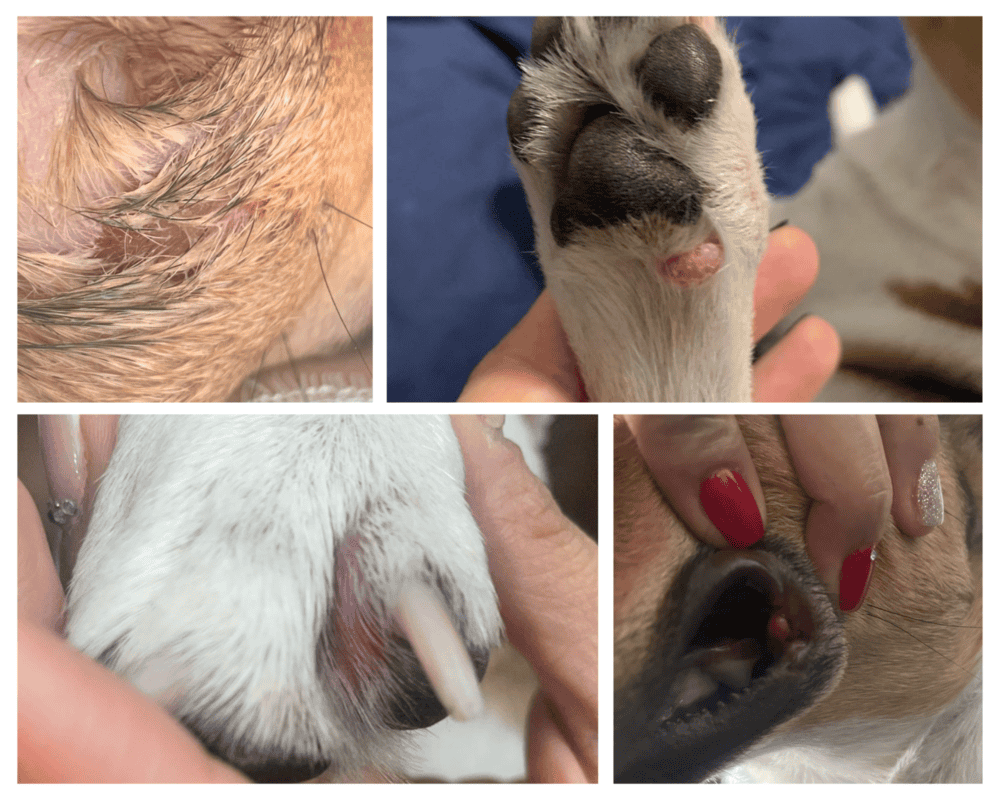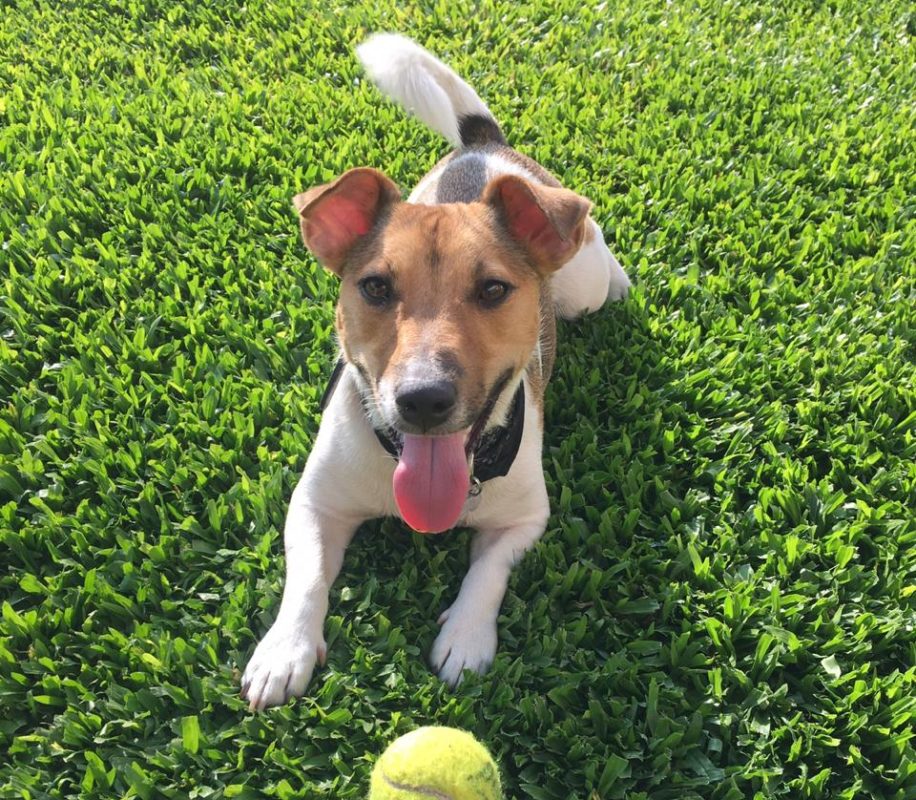When I found out my dog had cancer, I felt heartbroken and desperate. I didn’t know what to do or how to help him, but at the same time I felt driven to understand why this was happening to him. As started learning more, I realized one big thing: changing his food can make a huge difference. What my dog ate could actually help slow the cancer down. The biggest thing I learned? Carbs—like the ones in bread, potatoes, and rice—are not a good idea for dog cancer. Let me tell you why and how changing my dog’s diet made a huge difference.
What I Learned About Cancer and Food
My dog used to have a lot of skin problems. He was constantly scratching and small tumors used to appear all of the sudden. At first, I thought it was his genetics, however I started changing his kibble, first to a different brand, then another more premium one and finally to the most premium Hypoallergenic version of the kibble.
Although it got a bit better at first, his scratching didn’t stop and eventually these small tumors began to appear even more frequently. The pink tumor in the picture below for example, appeared all of the sudden, from one day to another. I felt really helpless.

When I started my research, I learned that Cancer cells are like energy hogs. They need fuel to grow, and they mostly get this fuel from glucose. Glucose comes from carbs in food. For healthy cells, glucose is just one of the fuels they can use. But for cancer cells? It’s their main energy source. They can’t use fats the way normal cells can.
When my dog ate foods that turned into glucose, I realized I was feeding the cancer without knowing it. I took a look a the list of kingredients in his kibble and all commercial kibble brands for that matter, and they were all high in carbs and highly processed. That’s when I decided to make a big change.
Carbs are in lots of foods we eat every day, like bread, pasta, and potatoes. For dogs, carbs can also come from foods like kibble, rice, and starchy veggies. When your dog eats carbs, the carbs that are not turned into energy, their body turns it into glucose. If your dog has cancer, that glucose gives the cancer cells the energy they need to grow and spread.
This was a huge eye-opener for me. By cutting out carbs, I could take away the cancer’s fuel.
The Power of a Low-Carb Diet
I started looking into low-carb diets for dogs with cancer. One study really stuck with me. It was about a dog with a tumor. The owner didn’t want to use chemo or surgery, so they switched the dog to a special diet—no carbs, lots of healthy fats, and good proteins. Over time, the tumor shrank, eventually dissappered, and the dog lived a full, happy life.
This study gave me hope If it worked for another dog, maybe it could work for mine.
Not only that, I also started following several keto diet websites and Instagram accounts that shared testimonials of people with tumors who began the keto diet and later experienced their tumors disappearing. Could it be? Only a change in diet could change everything?
At that moment I realized that the diet was not only impacting my dog Pixel, but I myself was eating lots of processed food and sugar. I decided we would both go on Keto.
The Dog Cancer Support Diet
I through away his kibble first and foremost. I really felt guilty for giving him so much processed food! I had a consult with a vet nutritionist and Instead of kibble or starchy foods, I started gaving him meals that were packed with healthy proteins, fats, and veggies according to her instructions. Here’s a breakdown of what worked for us:
- High-Quality Proteins: I made sure my dog got the best proteins to keep him strong. These were his favorites:
- Chicken thighs (without the skin)
- Lean beef
- Turkey
- Sardines and anchovies (small fish with lots of omega-3s)
- Healthy Fats: Fats became the main source of energy for my dog. Here’s what I used:
- Coconut oil
- Fish oil
- Pollock oil
- Non-Starchy Veggies: Veggies were a big part of his meals, but I avoided ones that were high in carbs, like potatoes and corn. Instead, I used:
- Broccoli
- Zucchini
- Spinach
- Supplements: I added a few things to boost his health:
- Probiotics for his gut
- Omega-3 oils to help with inflammation
- Turmeric to fight swelling and boost his immune system
Another big change I did was I stopped giving him commercial snack that had too many inactive ingredients and started giving him blueberries or carrots that he loves.
How I Made the Switch
Changing my dog’s food wasn’t something I did overnight. The vet explained that I had to take it slow, so I wouldn’t upset his stomach. Here’s what I did:
- Step-by-Step Changes: I started by mixing a small amount of the new food with his old food. Every few days, I added more of the new food and less of the old one.
- Watched Closely: I paid attention to his poop (yes, it’s not the most fun part of being a dog parent). If it got too soft, I slowed down the changes.
- Kept Him Hydrated: Fresh water was always available since I knew it was super important for his health.
Why This Worked
By cutting out carbs, I stopped feeding the cancer cells the fuel they needed. Instead, I gave my dog the nutrients he needed to feel stronger and healthier. The fats gave him energy, and the proteins helped keep his muscles strong. The veggies and supplements added extra vitamins and minerals to support his body.
What I Learned Along the Way
Making this change taught me a lot. It’s not just about cutting out carbs—it’s about giving your dog everything they need to fight back and stay strong. Every dog is different, so what worked for my dog might not work exactly the same for yours. But with the help of a vet and some research, you can find what works best.
If your dog has cancer, know that you’re not alone. It’s scary and overwhelming, but you can make a difference. Changing their diet to cut out carbs and include healthier options can help them feel better and give their body the support it needs. Always talk to your vet before making big changes to their food.
I’d started this beautiful support community and would love to invite you to join our new Facebook group: Dog Cancer Support Community. dedicated to the incredible parents of dogs currently battling cancer, as well as those who have triumphed over it. 💪❤️
With love, the right food, and lots of care, you can help your dog fight back—just like I did.


